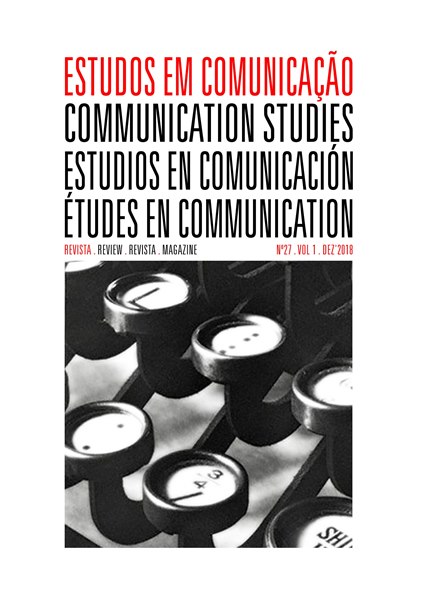Trump: the negative uprise in Political Humor
Palavras-chave:
Humor, Emotions, Political Campaign, Political Communication, Political Humor, TrumpResumo
The 2016 campaign for the U.S. Presidency revealed, and confirmed, the new turn that the role of emotions play in the present political landscape across the globe. The big happening wasn’t so much the relation between emotions and politics but more the scale and overwhelming strategic use of negative emotions in the political debate. Understanding emotions as underlying the rationality process, involves cognitive and strategic consequences and, to the limit, their influence in decision-making. Politics always operated in this ambivalence and political campaign strategists are particularly concerned with the timing where these operators must be more efficiently communicated. This has been a well-known recipe used in mild doses and with the focus on a balanced performance. The political campaign for the U.S. Presidency in 2016 seems to follow this general rule but also introduces a particular novelty: the extensive use of negativity in the debate. In the impossibility of covering all the contours of the problem at hand we will focus on the Trump campaign, since it was one of transgression, which made use of aggressive tactics regarding common sense ideas, political correctness and taboo issues. Regarding Trump´s campaign as one of management of the provocateur factor, we will try to present the two main emotional ingredients that supported a campaign established in an efficient use of timing, media and boredom. The first emotion in analysis will be fear. This implies exploiting one of the most powerful tools in the political emotion pallet. The main derivatives could be aggression, violence, hate and resentment. The second emotion in focus will be contempt. This means the discussion of ad hominem attacks and the power of humor through scorn and mockery. In general, our goal will be to map the negative up rise in political emotionality and its strategic use in the campaign.
Referências
Ben-Ze’ev, A. (2000). The Subtlety of Emotions. Ed. Massachusetts Institute of Technology.
Borchers,T. (1998). The Burlesque, the Comic, and the Tragic, Paper presented to the National Communication Association,1998 Convention, New York,Nov. 22.
Kasper, K. (2013). O jogo dos Clowns. Revista Nada, (17).
Král, P. (s.d.). Le Burlesque. Éditions Ramsay, of California Press.
Manstead, A.; Frijda, N. & Fischer, A. (ed.) (2004). Feelings and Emotions. Cambridge University Press.
Moore, M. P. (1992). The Quayle Quagmire: Political Campaigns in the Poetic Form of Burlesque. Western Journal of Communication, 56, Spring: 108-124.
Meyer, J. (2000). Humor as a Double-Edged Sword: Four Functions of Humor. Communication Theory (10), August.
Rorty, A. (ed.) (1980). Explaining emotions. University of California Press.
Solomon, R. (ed.) (2003). What is an emotion?. Oxford University Press.
Smith, C.; & Voth, B. (2002). The Role of Humor in Political Argument: How ’strategery’ and ’lockboxes’ Changed a Political Campaign.
Strauss., L. (1965). Natural right and history. The university of chicago press, Chicago.
Flathman, R. (2002). Thomas Hobbes. Oxford: Rowan & Littlefield Publishers.
Hobbes, T. (2004). Do cidadão. São Paulo: Ed. Martin Claret.
Strauss, L. & Cropsey, J. (1987). History of political philosophy. Chicago: The university of chicago press.


